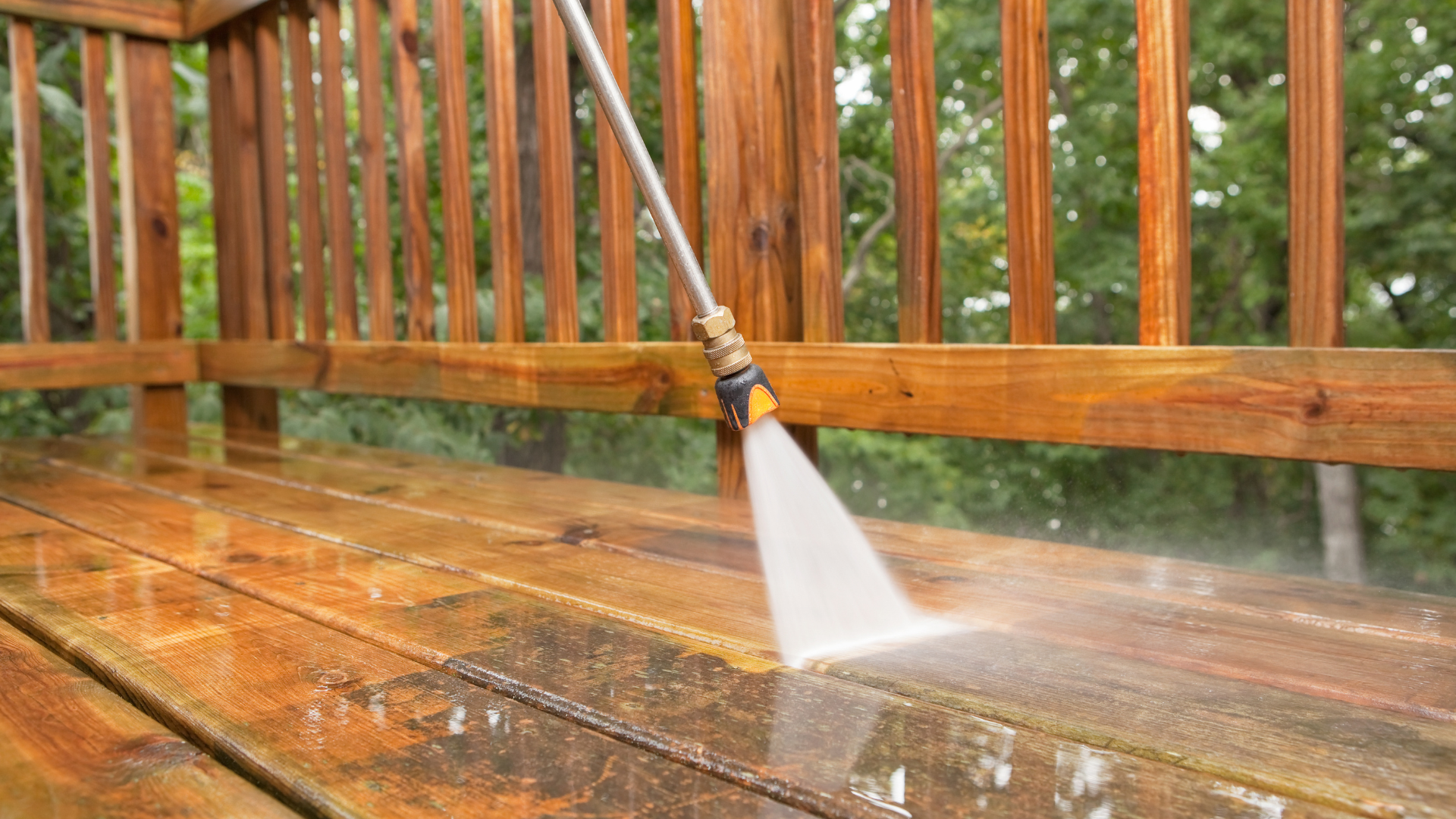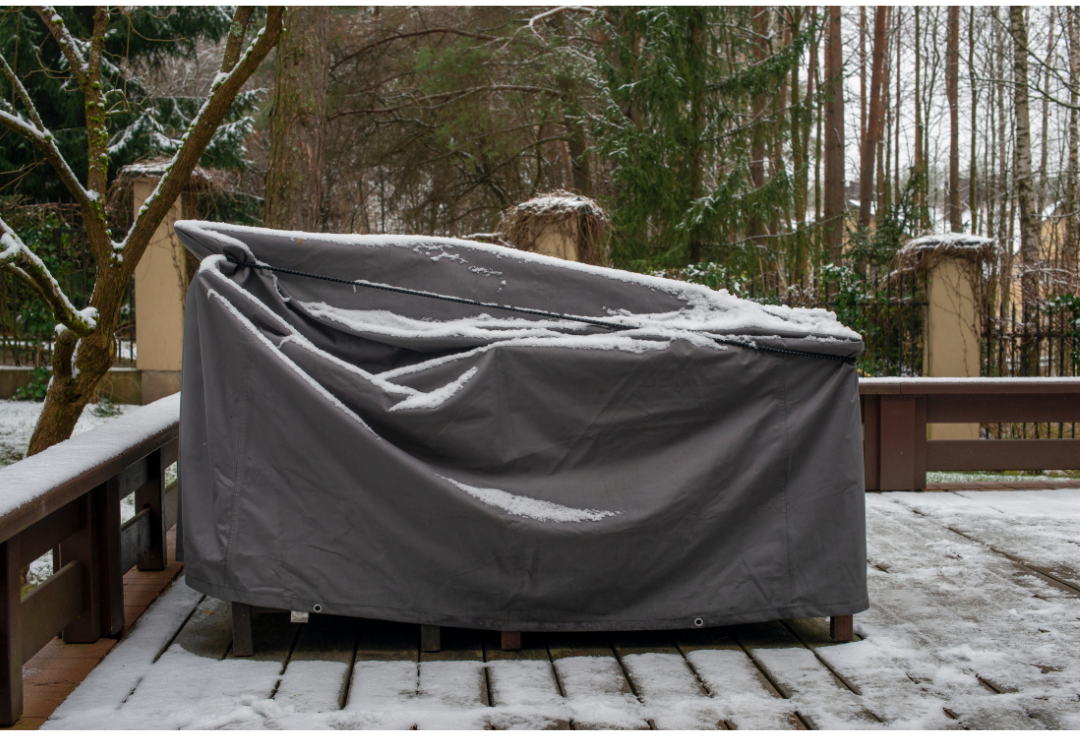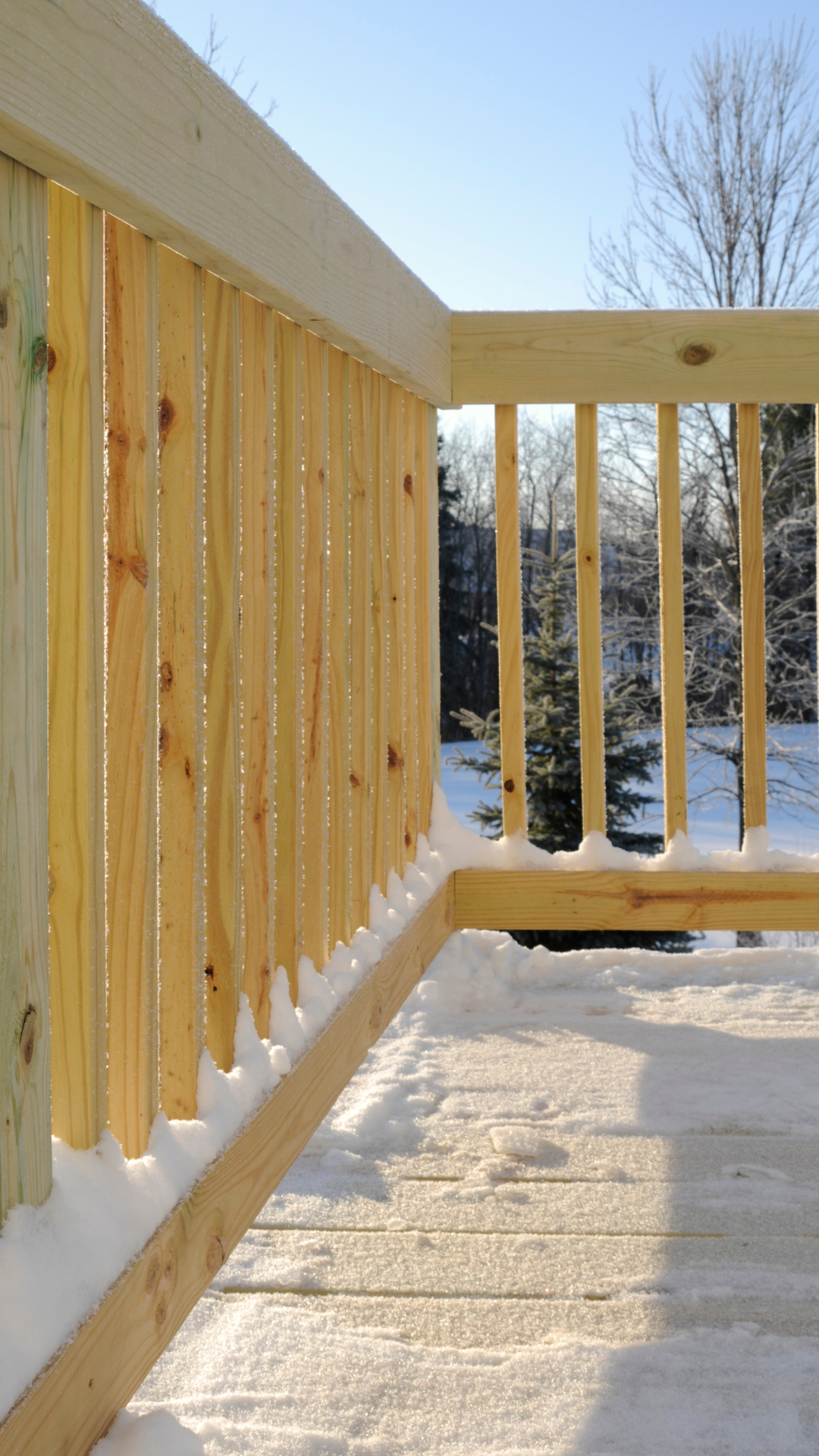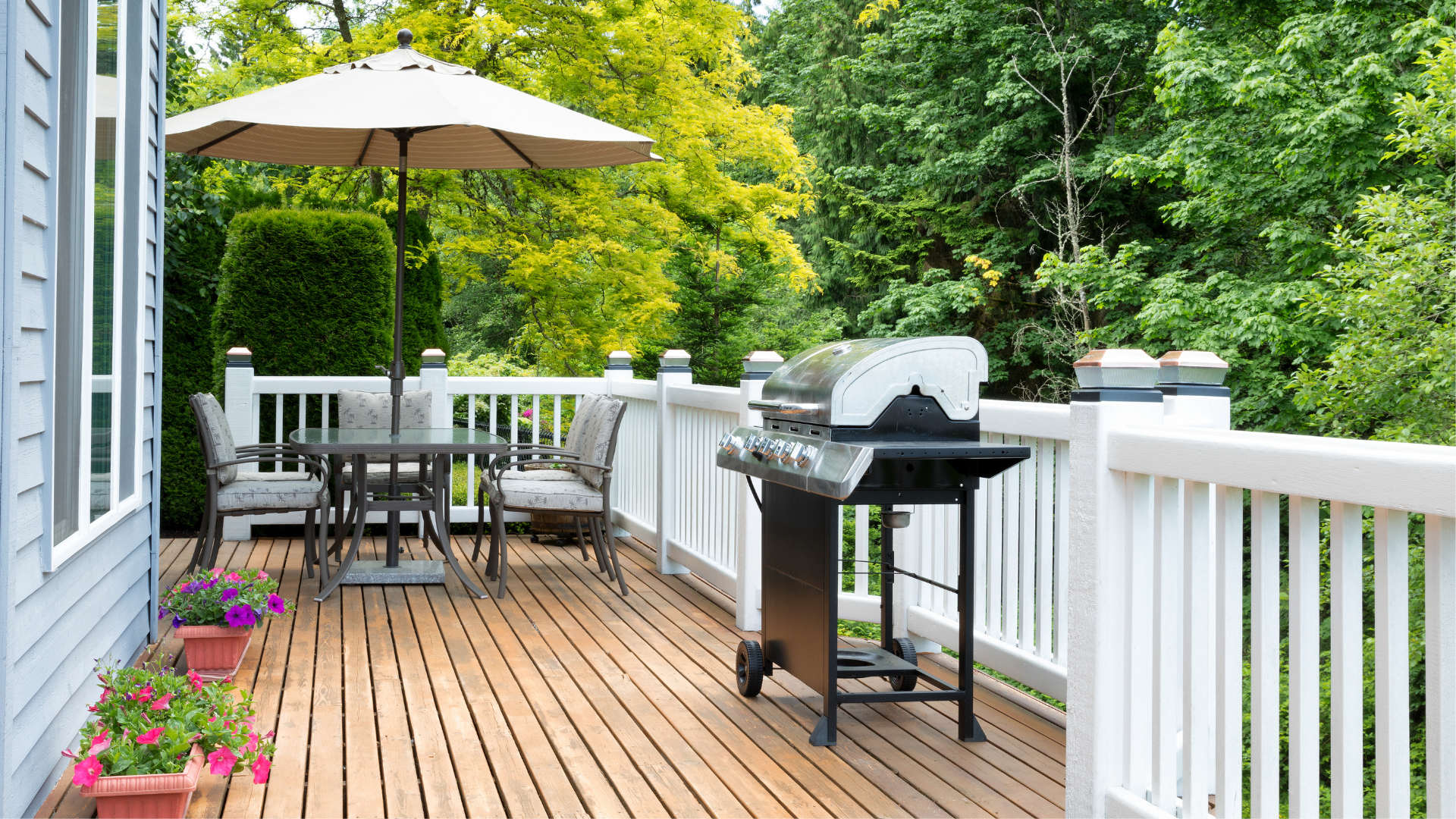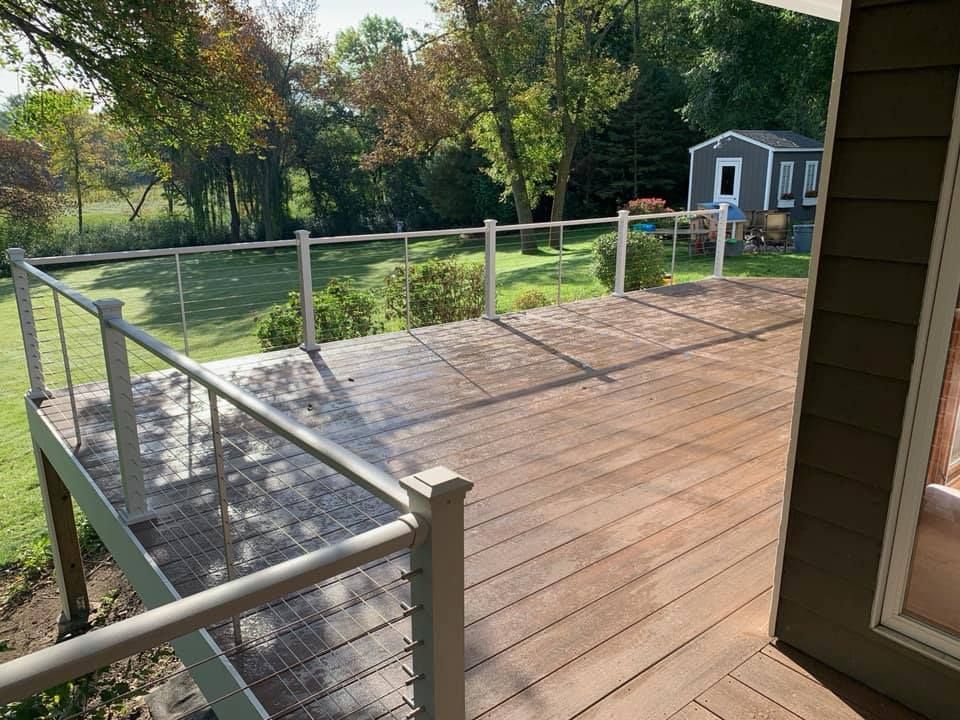- Clean It Up: Give your deck a good sweep and wash off any dirt, leaves, and debris that could trap moisture. A power washer works well if you’re careful—just don’t get too close or you could damage the wood.
- Check for Wear and Tear: Look for any cracks, loose boards, or nails that need tightening. Wood can expand and contract with the freeze-thaw cycles, so it’s better to fix any issues now rather than in the middle of winter.
- Sand and Seal: Smoothing out rough spots with a bit of sanding is a nice touch, and sealing the deck is a must. A good water-repellent sealant will help protect your wood from moisture. Just pick a dry day that’s not too cold, and double check you’re using a sealer made for outdoor winter conditions.
- Cover or Store Outdoor Furniture: Leaving furniture out can trap moisture underneath, which is a breeding ground for mold and stains. Either cover it up with waterproof covers or, better yet, stash it indoors if you can.
- Skip the Salt: Salt may help melt ice, but it’s rough on wood. Instead, use sand for added traction, or look for a deck-safe ice melt that won’t hurt the wood.
How to Winterize Your Deck: Expert Tips from Pink Construction
Winter’s coming, and if you have a deck, now’s the perfect time to prep it. Even as I write this here in Minnesota, it is snowing and cold. Thankfully the weather is going to warm up a bit for those of us who still need to do some outside prep!
A little care now can save you from dealing with damage from snow, ice, and those freezing temps. Here at Pink Construction, we want to help you make sure your deck, whether it’s classic wood or low-maintenance composite, is in good shape for the winter.
Why Winterizing Your Deck Matters
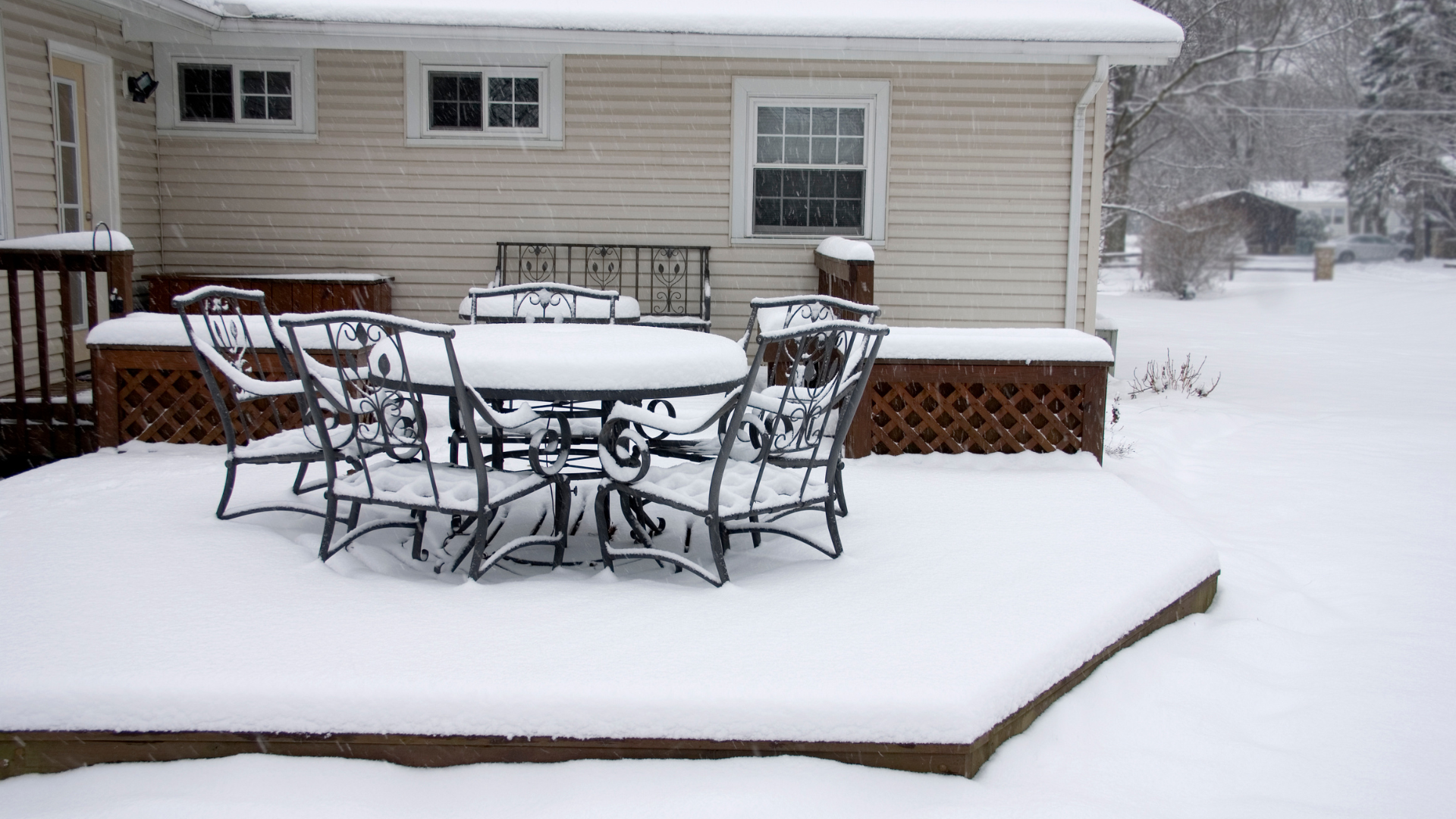
Taking the time to winterize your deck might seem like an extra chore, but it’s really about keeping your investment safe from the harsh winter elements. Winter can be tough on decks, especially with the freezing and thawing cycles that can cause wood to crack, composite boards to weaken, and even mold to creep in. When snow piles up and temperatures drop, moisture can seep into the deck’s material—whether it’s wood or composite—and create long-term damage like rot, warping, and discoloration.
Think of it this way: a little effort now means your deck will look great and hold up longer. Winterizing a deck protects the finish, prevents issues that might require major repairs later, and makes it so that when spring rolls around, you’re ready to get back to enjoying your outdoor space instead of dealing with winter’s aftermath. So, while it might seem like a small task, winterizing your deck is an easy way to keep your deck strong, beautiful, and ready for years of backyard BBQs, family gatherings, and all those sunny days ahead. Here’s what we recommend:
For Wood Decks: Protection from the Elements
Wood decks have that warm, natural look we all love, but they also need a little extra care to handle winter. Here’s how to keep them looking great:
For Low-Maintenance Decks: Just a Few Tweaks
If you have a
composite or other low-maintenance deck, you’re already set up for easier winter care. Still, a few steps now can help it stay in top shape:
Bonus Tips for All Decks
A few extra steps go a long way:
- Breathable Furniture Covers
Covers are great, but make sure they’re breathable. Trapped moisture can lead to mold or mildew. - Check the Railing
Don’t forget about the railing. Check that everything’s secure so it’s stable even during icy conditions. - Watch the Drainage
Double check water flows away from your deck. Clogged gutters or downspouts can overflow and spill onto the deck, causing issues.
DIY vs. Hiring a Professional
Winterizing your deck can be a pretty straightforward job if you have some time and the right tools. But if you're feeling unsure about the process or if your deck’s seen better days, it might be worth calling in a pro. Let’s break down when it makes sense to tackle it yourself and when to get a little help.
Final Thoughts
Winterizing your deck doesn’t have to be complicated. With a bit of prep now, you can keep your deck in great shape, ready to enjoy when warmer weather comes back around. And if you need help or advice, don’t hesitate to give us a shout at Pink Construction!

Author:
Dave Pink, Owner of Pink Construction
Connect with Dave!


